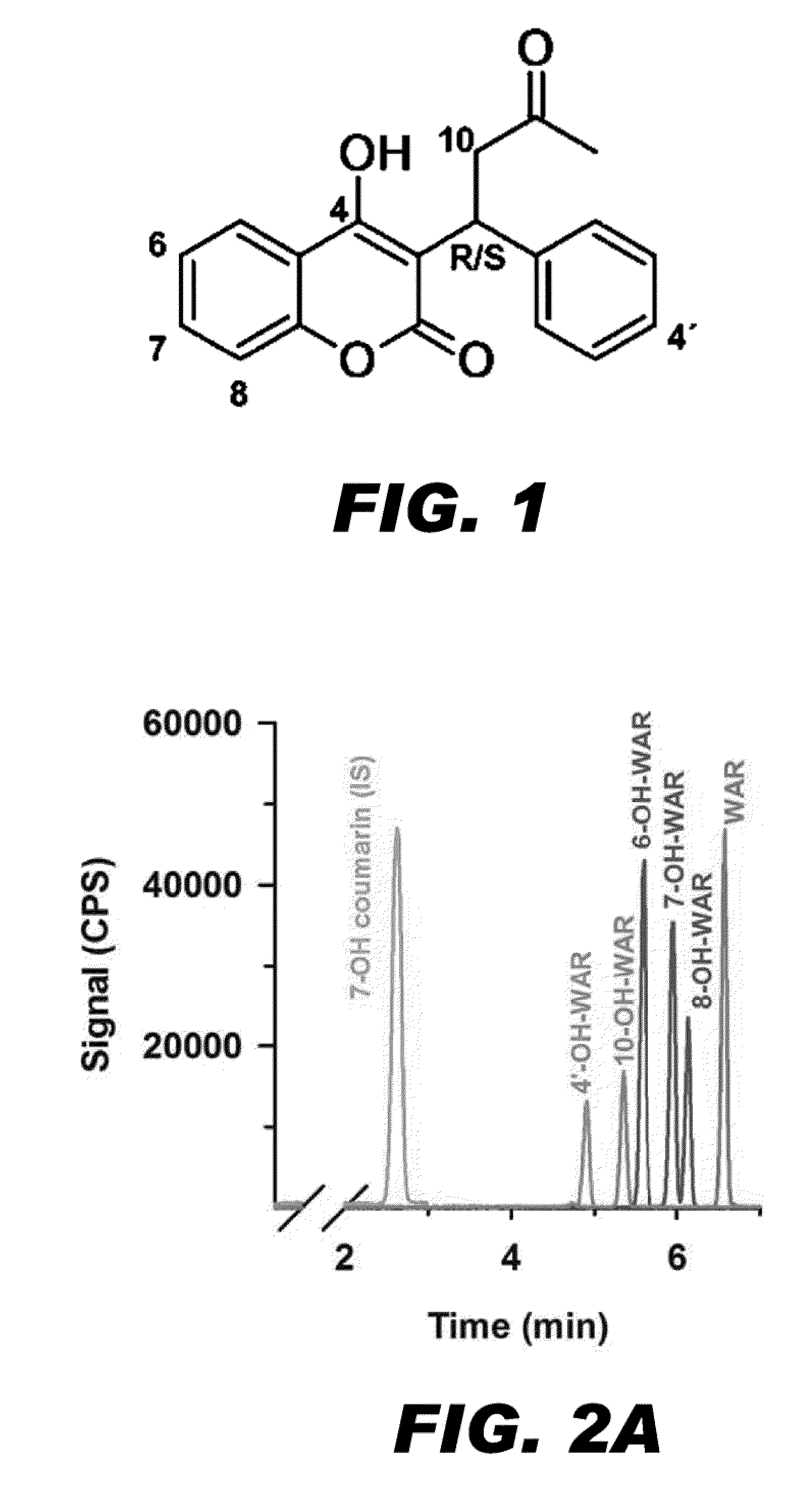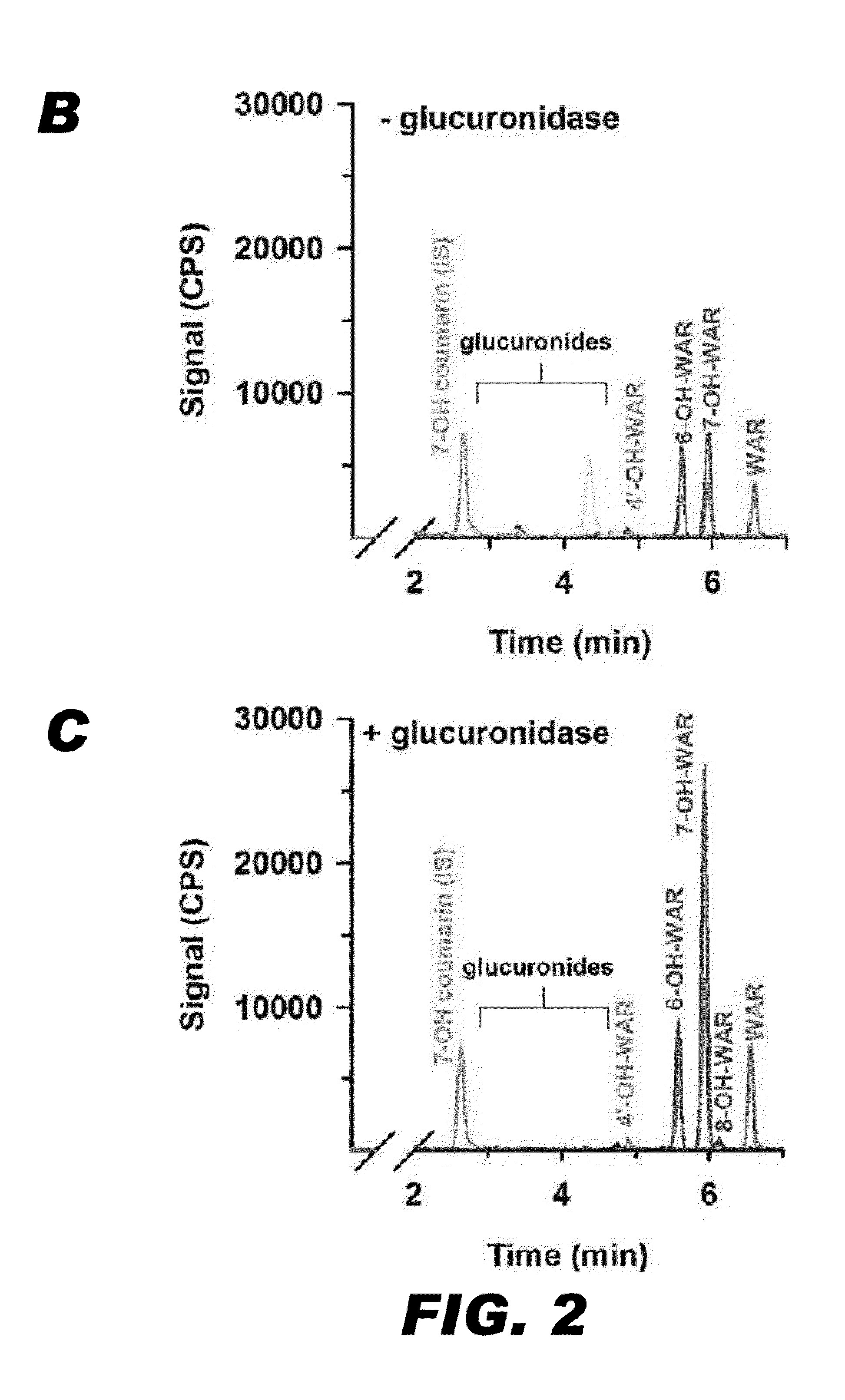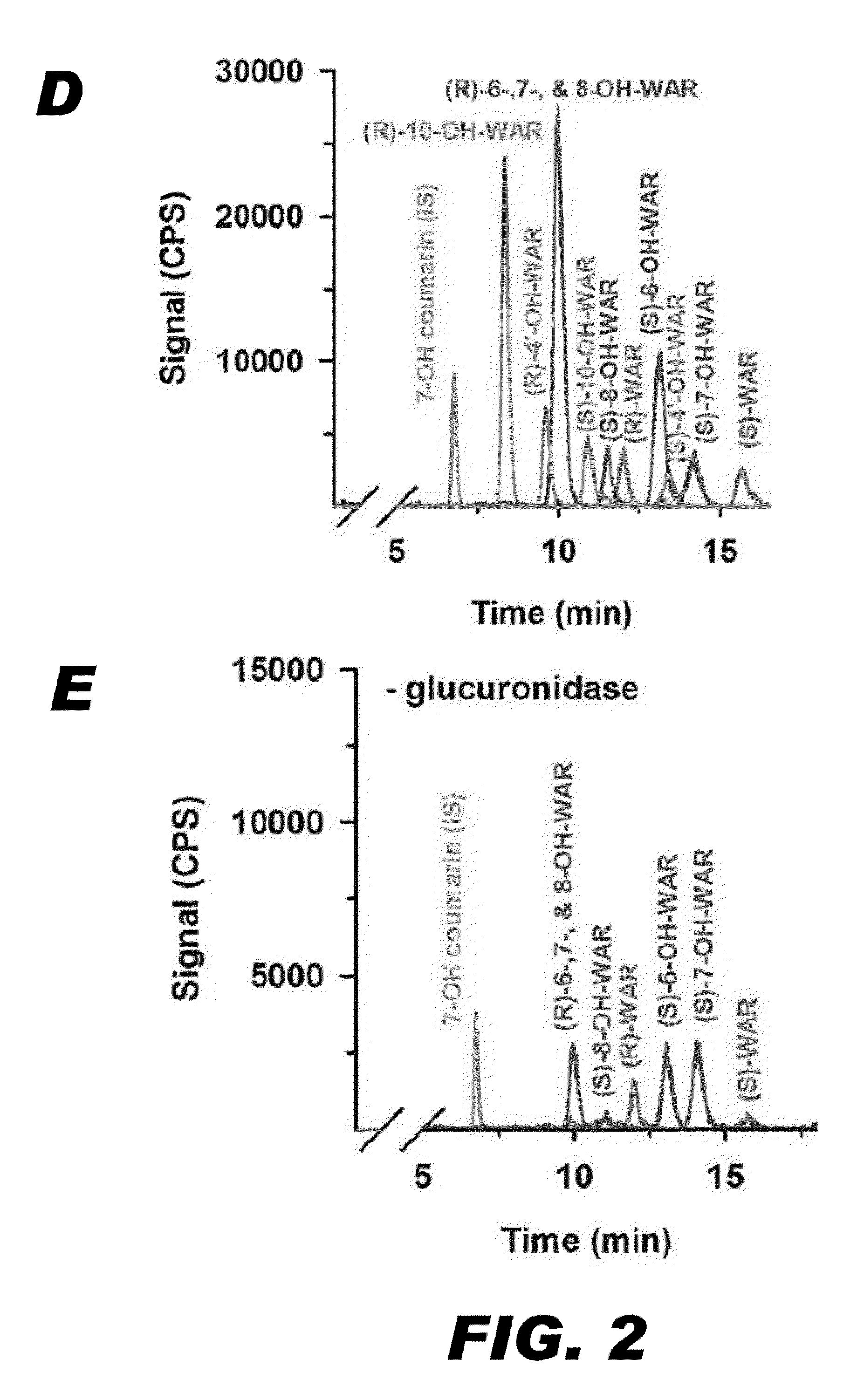Methods and compositions for detecting metabolites
a metabolic profile and metabolic technology, applied in the field of metabolic profiles, can solve the problems of limited personalization of war therapy, ineffective management of anticoagulant therapy strategies, and complex traditional approaches
- Summary
- Abstract
- Description
- Claims
- Application Information
AI Technical Summary
Benefits of technology
Problems solved by technology
Method used
Image
Examples
example 1
REFERENCES FOR EXAMPLE 1
[0091]1. Lesko, L. (2008) The critical path of warfarin dosing: finding an optimal dosing strategy using pharmacogenetics. Clin. Pharmacol. Ther. 84, 301-303.[0092]2. Bristol-Myers (2005) Coumadin tablets.[0093]3. Eble, J. N., West, B. D., and Link, K. P. (1966) A comparison of the isomers of warfarin. Biochem. Pharmacol. 15, 1003-1006.[0094]4. Rettie, A. E., Korzekwa, K. R., Kunze, K. L., Lawrence, R. F., Eddy, C., Aoyama, T., Gelboin, H. V., Gonzalez, F. J., and Trager, W. F. (1992) Hydroxylation of warfarin by human cDNA-expressed cyto chrome P-450: A role for P-4502C9 in the etiology of (S)-warfarin drug interactions. Chem. Res. Toxicol. 5, 54-59.[0095]5. Kaminsky, L. S., and Zhang, Z. Y. (1997) Human P450 metabolism of warfarin. Pharmacol. Ther. 73, 67-74.[0096]6. Wadelius, M., Chen, L. Y., Eriksson, N., Bumpstead, S., Ghori, J., Wadelius, C., Bentley, D., McGinnis, R., and Deloukas, P. (2007) Association of warfarin dose with genes involved in its actio...
example 2
[0113]Every year, two million people begin Coumadin (R-, S-Warfarin [War]) therapy in the United States. War is a challenging drug to accurately dose, both initially and for maintenance, because of its narrow therapeutic range, wide inter-patient variability, and long list of factors that can influence dosing. Recently, War was reported to be the fourth leading cause of adverse drug events. Therefore, the development of improved treatment and effective management in anticoagulant therapy strategies remains an important challenge. It is well established that effective personalization of War therapy may have to rely on much more than just pharmacogenomic information. The current challenge for personalizing War therapy is to develop better clinical diagnostics that can account for all confounding factors and develop better anticoagulant drugs by improving the understanding of War metabolic pathways. Due to the limitations of the traditional approach, personalizing War therapy is limite...
example 3
[0135]An important contributor to patient metabolic capacity is the ability of molecules to compete with War for enzyme active sites. Concurrent drugs that recognize the same CYPs metabolizing War have been shown to greatly affect R- and S-War clearance and drug responses. Similarly, it is hypothesized that OHWars act through a product feedback inhibition mechanism on CYP hydroxylation of War, thereby decreasing catalytic efficiency. OHWar binding or re-binding to metabolizing enzymes effectively blocks subsequent turnover of the parent drug, thereby decreasing clearance and enhancing the anticoagulant effect (FIG. 6A). The significance of this mechanism derives from patient metabolic capacities for CYP activities, such that higher capacities favor inhibition, while lower capacities do not. The potency of this effect is underscored by higher bioavailability of OHWars relative to War due to weaker plasma binding properties. As a counter to product accumulation, OHWars undergo Phase I...
PUM
| Property | Measurement | Unit |
|---|---|---|
| flow time | aaaaa | aaaaa |
| pH | aaaaa | aaaaa |
| flow time | aaaaa | aaaaa |
Abstract
Description
Claims
Application Information
 Login to View More
Login to View More - R&D
- Intellectual Property
- Life Sciences
- Materials
- Tech Scout
- Unparalleled Data Quality
- Higher Quality Content
- 60% Fewer Hallucinations
Browse by: Latest US Patents, China's latest patents, Technical Efficacy Thesaurus, Application Domain, Technology Topic, Popular Technical Reports.
© 2025 PatSnap. All rights reserved.Legal|Privacy policy|Modern Slavery Act Transparency Statement|Sitemap|About US| Contact US: help@patsnap.com



